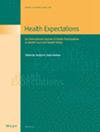A Joanna Briggs Institute Framework Approach to Shared Decision Making in End-of-Life
Abstract
Aim
To implement shared decision-making (SDM) through a patient decision aid (PtDA) for the initiation of palliative care (PC) in end-of-life (EOL) cancer patients.
Methodology
A comprehensive Scoping Review was conducted on SDM in PubMed, CINAHL and PsycInfo. An evidence-based implementation of PtDAs was created using the Joanna Briggs Institute framework, which followed rigorous pillars: (1) context, (2) facilitation and (3) evaluation.
Results
Fifteen studies were identified and categorised into (1) Implementation characteristics and (2) Strategies for implementing SDM in terminally ill cancer patients. SDM should consider the decision-making location, optimal timing, participants and decision type. Strategies include professional training, PtDAs and implementation programmes. A PtDA implementation protocol in video format for deciding to initiate PC is proposed, following International Patient Decision Aid Standards (IPDAS) and Clinical Practice Guidelines (CPG).
Conclusions
SDM implementation should be guided by evidence-based methodological models justifying and structuring its execution, especially in complex and interdisciplinary contexts. National or international frameworks facilitate the adoption of health innovations, such as PtDAs, benefiting patients and improving their usage.
Practice Implications
SDM is not just a concept but an important approach to the Care of cancer patients at EOL, enhancing patient satisfaction and improving care quality. The success and sustainability of SDM hinge on the fundamental aspects of staff training, interdisciplinary collaboration and ongoing evaluation. The lack of specific aid in Spanish underscores the immediate need for local development. Further research is needed in this area, as most reviewed studies did not measure SDM effectiveness in diverse hospital settings.
Patient or Public Contribution
This proposal was developed based on the experience and input of the nursing staff from the healthcare service where it is intended to be implemented.


 求助内容:
求助内容: 应助结果提醒方式:
应助结果提醒方式:


